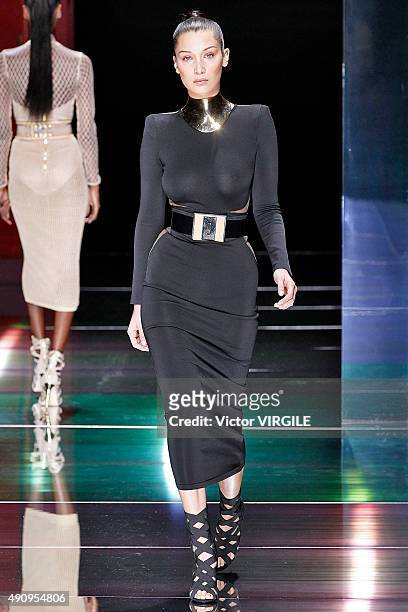#cosmetic industry analysis
Text
Shrinking Giants, Big Benefits: Nanotechnology Revolutionizing Cosmeceuticals Market

Introduction:
The Cosmeceuticals Market is constantly evolving, with innovative technologies pushing the boundaries of what's possible. Nanotechnology, the manipulation of matter at the atomic and molecular level, is emerging as a game-changer, offering exciting possibilities for more effective and targeted cosmeceutical products.
This article delves into the potential of nanotechnology in cosmeceuticals, explores the benefits and challenges, and analyzes the impact it's having on the future of beauty.
Download FREE Sample: https://www.nextmsc.com/cosmeceuticals-market/request-sample
Beyond the Surface: Traditional Cosmeceutical Delivery Limitations
Traditional cosmeceuticals often face limitations in delivering ingredients effectively:
Limited Penetration: Many active ingredients struggle to penetrate deep enough into the skin for maximum impact.
Instability of Ingredients: Certain ingredients can degrade due to exposure to light, air, or other factors, reducing their efficacy.
Potential for Irritation: Some ingredients may cause irritation, especially for sensitive skin.
Beyond the Microscope: Nanotechnology's Promise for Cosmeceuticals
Nanotechnology offers solutions to limitations faced by traditional cosmeceuticals:
Enhanced Delivery: Nanoparticles can penetrate deeper into the skin layers, delivering ingredients directly to target sites.
Improved Stability: Nanoencapsulation can protect active ingredients from degradation, enhancing their effectiveness.
Targeted Action: Nanoparticles can be designed to target specific skin cells or concerns for a more precise approach.
Reduced Irritation: Nanoscale ingredients may be less likely to irritate the skin compared to their larger counterparts.
Inquire before buying: https://www.nextmsc.com/cosmeceuticals-market/inquire-before-buying
Beyond the Hype: Potential Benefits of Nanotechnology in Cosmeceuticals
Nanotechnology offers a range of potential benefits for cosmeceutical products:
Anti-Aging: Improved delivery of ingredients like antioxidants and retinol for enhanced anti-aging effects.
Skin Brightening: Targeted delivery of lightening agents for a more even skin tone.
Treating Hyperpigmentation: Nanoparticles can deliver ingredients to address hyperpigmentation more effectively.
Treating Acne: Enhanced delivery of acne-fighting ingredients directly to sebaceous glands.
Hydration Boost: Nano-sized moisturizers can penetrate deeper, providing long-lasting hydration.
Sun Protection: Nanoparticles can improve the efficacy and wearability of sunscreens.
Beyond the Promise: Challenges and Considerations for Nanotechnology in Cosmeceuticals
Despite its potential, nanotechnology in cosmeceuticals presents some challenges:
Limited Research: Long-term safety studies are crucial to understand the potential risks associated with nanomaterials in cosmetics.
Regulation and Standards: Clear regulatory frameworks are needed to ensure the safety and efficacy of nanotechnology-based cosmeceuticals.
Consumer Education: Raising awareness about the benefits and potential risks of nanotechnology in cosmetics is essential.
Environmental Impact: The potential environmental impact of nanomaterials used in cosmeceuticals needs careful consideration.
Beyond the Lab: The Impact of Nanotechnology on the Future of Cosmeceuticals
Nanotechnology is likely to significantly impact the future of cosmeceuticals:
More Targeted and Effective Products: Development of cosmeceuticals with a laser focus on specific skin concerns.
Improved Ingredient Stability: Enhanced shelf life and efficacy of active ingredients in cosmeceutical products.
Personalized Skincare: Nanotechnology could pave the way for customized cosmeceuticals based on individual needs.
Focus on Sustainability: Development of environmentally friendly nanomaterials for responsible cosmeceutical production.
Beyond the Hype: The Road Ahead for Nanotechnology in Cosmeceuticals
Realizing the full potential of nanotechnology in cosmeceuticals requires careful consideration:
Continued Research: Further research is needed to ensure the safety and long-term impact of nanomaterials used in cosmetics.
Open Dialogue: Transparent communication between scientists, regulators, and consumers is essential for responsible development.
Focus on Sustainability: Developing sustainable and eco-friendly approaches to nanomaterials in cosmeceuticals.
Consumer Education: Empowering consumers with knowledge about nanotechnology and its role in cosmeceuticals.
Conclusion: A Nano Revolution for Beauty: The Rise of Nanotechnology in Cosmeceuticals
Nanotechnology presents a powerful tool for revolutionizing the cosmeceutical industry. By prioritizing safety, research, and sustainability, this technology can unlock a new era of targeted, effective, and personalized cosmeceuticals.
As nanotechnology continues to evolve, cosmeceutical products can become more sophisticated, offering enhanced solutions for achieving and maintaining healthy, radiant skin.
Consumers can expect a future where cosmeceuticals leverage the power of nanotechnology to deliver precisely tailored solutions for their unique needs, fostering a more informed and empowered approach to beauty.
#cosmeceuticals#cosmetics#consumer goods#personal care products#skin care#market trends#market research#industry analysis#innovation#global market
0 notes
Text
Exploring the Success Story of Sugar Cosmetics: A Deep Dive into Their Revenue Streams
1. Introduction
Brief overview of Sugar Cosmetics
Importance of understanding their revenue
2. Sugar Cosmetics: Company Background
Founding story and key milestones
Brand philosophy and values
3. Revenue Streams Overview
Diverse product offerings
Market positioning and target audience
4. Revenue Analysis
4.1 Sales Channels
Retail distribution
Online sales platforms
4.2 Product…

View On WordPress
#beauty#Beauty industry#Branding#cosmetics#makeup#Marketing Strategies#Revenue Analysis#Sales Channels#Sugar Cosmetics
1 note
·
View note
Text
Synthesis and Characterization of Methyl Myristate: A Chemical Perspective

Synthesizing Methyl Myristate involves a series of chemical reactions that transform starting materials into this valuable ester. The process typically begins with the esterification of myristic acid with methanol, resulting in the formation of Methyl Myristate. This reaction, catalyzed by an acid or base, proceeds under controlled conditions to yield the desired product. Methyl Myristate, once synthesized, undergoes thorough characterization to confirm its purity, identity, and chemical properties.
Characterization of Methyl Myristate involves a comprehensive analysis of its physical and chemical attributes. Techniques such as chromatography, spectroscopy, and mass spectrometry are commonly employed to elucidate its molecular structure, determine its purity, and identify any impurities present. Gas chromatography, in particular, is widely used to quantify the percentage of Methyl Myristate in a sample and assess the efficiency of the synthesis process.
The molecular structure of Methyl Myristate is elucidated through spectroscopic techniques such as infrared (IR) spectroscopy and nuclear magnetic resonance (NMR) spectroscopy. These methods provide valuable insights into the functional groups present in the molecule and confirm its identity based on characteristic spectral peaks. By comparing experimental spectra with reference data, researchers can verify the successful synthesis of Methyl Myristate and ensure its quality for further applications.
In addition to structural analysis, characterization of Methyl Myristate includes the determination of its physical properties, such as melting point, boiling point, and density. These parameters provide valuable information about the compound's behavior under different conditions and its suitability for various applications. For example, the melting point of Methyl Myristate influences its solidification temperature in cosmetic formulations, while its density affects its solubility and compatibility with other ingredients. Get More Insights On This Topic: Methyl Myristate
#Methyl Myristate#Chemical Synthesis#Esterification#Spectroscopic Analysis#Physical Properties#Chemical Characterization#Industrial Applications#Cosmetic Ingredients
0 notes
Text
Cosmetics Market SWOT Analysis

The cosmetics industry is a booming global market, expected to reach a staggering US$511 billion by 2025.
#Cosmetics Market#Cosmetics Industry#cosmetics industry reports#Cosmetics Market SWOT Analysis#Cosmetics Market Major Players
0 notes
Text
The Ever-Evolving Cosmeceuticals Market Industry Insights
The cosmeceuticals industry, a fascinating blend of cosmetics and pharmaceuticals, has been experiencing phenomenal growth in recent years. Driven by rising consumer awareness, disposable incomes, and an aging population, this sector is projected to reach new heights in the years to come. But what exactly lies ahead for this dynamic market? Let’s delve deeper into the cosmeceuticals industry with some key questions:
What is the cosmeceuticals market size and growth potential?

The global cosmeceuticals market size was valued at USD 131.1 billion in 2023 and is expected to reach USD 240.2 billion by 2028, growing at a CAGR of 9.8% during the forecast period. This impressive growth trajectory is attributed to several factors, including:
Rising demand for anti-aging and skin rejuvenation products: Consumers are increasingly seeking cosmeceuticals to address concerns like wrinkles, fine lines, and age spots.
Growing awareness of the benefits of cosmeceuticals: With more information readily available, consumers are becoming more aware of the potential benefits of cosmeceuticals compared to traditional cosmetics.
Increasing disposable incomes: A rise in disposable incomes, particularly in emerging economies, is leading to increased spending on beauty and personal care products.
Shifting consumer preferences: Consumers are now more inclined towards natural and organic cosmeceuticals, driven by concerns about the safety of synthetic ingredients.
Who are the major players in the cosmeceuticals market?

L’Oréal
Estée Lauder Companies
Procter & Gamble
Johnson & Johnson
Shiseido
Allergan
Merz Aesthetics
Galderma
Valeant Pharmaceuticals
Beiersdorf
These companies are constantly innovating and developing new cosmeceutical products to cater to the evolving needs of consumers.
Where are the fastest-growing cosmeceuticals markets?
The Asia Pacific region is expected to be the fastest-growing cosmeceuticals market in the coming years, driven by factors such as a large and growing population, rising disposable incomes, and increasing awareness of the benefits of cosmeceuticals. Other regions with high growth potential include Latin America and the Middle East.
When will we see the next big innovation in cosmeceuticals?

The cosmeceuticals industry is constantly on the lookout for new and innovative ingredients and technologies. Some of the areas with promising potential include:
Personalized cosmeceuticals: Products tailored to individual skin types and concerns.
Biotechnology-derived ingredients: Ingredients derived from living organisms, such as stem cells and peptides, with potential anti-aging and skin-repairing properties.
Nanotechnology: The use of nanoparticles to deliver ingredients more effectively into the skin.
With continuous research and development, the future of cosmeceuticals looks bright, with exciting new possibilities waiting to be explored.
Why is the cosmeceuticals industry so important?
The cosmeceuticals industry plays a significant role in the overall beauty and personal care market. It provides consumers with products that offer both cosmetic and therapeutic benefits, addressing a wider range of concerns than traditional cosmetics. Additionally, the industry creates jobs, fosters innovation, and contributes to the global economy.
How can I stay updated on the latest trends in the cosmeceuticals industry?

Staying updated on the latest trends in the cosmeceuticals industry is essential for anyone involved in this dynamic sector. Here are some ways to do so:
Read industry publications and reports: Subscribe to industry newsletters and magazines to stay informed about the latest news, trends, and product launches.
Attend industry events and conferences: Attending industry events and conferences is a great way to network with other professionals and learn about the latest developments.
Follow cosmeceutical brands and influencers on social media: Many cosmeceutical brands and influencers share valuable insights and updates on social media.
By staying informed about the latest trends and developments, you can position yourself to succeed in the ever-evolving cosmeceuticals industry.
#cosmeceuticals industry#cosmeceuticals market#cosmeceuticals market analysis#cosmeceuticals market future#cosmeceuticals market growth#cosmeceuticals market insights#cosmeceuticals market major players#cosmeceuticals market revenue#cosmeceuticals market share#cosmetics industry reports
0 notes
Text
Cosmetic Surgery and Services Market is poised to grow at a CAGR of 5.5% by 2028. Growing Demand for Minimally Invasive and Non-invasive Procedures fueling the industry growth.
#Cosmetic Surgery and Services Market#Cosmetic Surgery and Services Market Report#Cosmetic Surgery and Services Industry Report#Cosmetic Surgery and Services Market Size#Cosmetic Surgery and Services Market Share#Cosmetic Surgery and Services Market Growth#Cosmetic Surgery and Services Market Forecast#Cosmetic Surgery and Services Market Analysis#Cosmetic Surgery and Services Market Outlook#Cosmetic Surgery and Services Market Overview.
0 notes
Text
Global Glycolic Acid Market: Trends, Growth, and Future Prospects
The glycolic acid market was valued at USD 309.3 million in 2021, and it is set to reach USD 604.4 million by 2030, growing at a CAGR of 7.7% between 2021 and 2030, according to a research report by a market research company P&S Intelligence.
In 2021, the personal care and cosmetics category held the largest market share at 58.2%. this is due to glycolic acid being extensively utilized in…

View On WordPress
#Alpha hydroxy acids#Biodegradable compounds#Chemical exfoliation#chemical industry#Chemical peels#Cosmetic chemistry#Cosmetic formulations#Dermatological treatments#Glycolic acid#Industrial applications#market analysis#market growth#market trends#Organic acids#Pharmaceutical additives#Product innovation#Skin care industry#Sustainable sourcing#Textile industry
0 notes
Text
Unlocking the Power of Collagen: How it Enhances Joint Health and Mobility in the Collagen Market

Introduction:
In the realm of health and wellness, collagen has emerged as a superstar ingredient, celebrated for its myriad benefits beyond skin care. One area where collagen shines particularly bright is in promoting joint health and enhancing mobility. As a vital component of the connective tissues that support our joints, collagen plays a crucial role in maintaining their strength, flexibility, and resilience. In this comprehensive guide, we'll delve into the science behind collagen and its profound benefits for joint health and mobility.
According to Next Move Strategy Consulting, the global Collagen Market is predicted to reach USD 11.01 billion by 2030 with a CAGR of 7.9% from 2024-2030.
Download FREE Sample: https://www.nextmsc.com/collagen-market/request-sample
Understanding Collagen: Before exploring its benefits for joint health, let's first understand what collagen is and why it's essential for our bodies. Collagen is the most abundant protein in the human body, serving as a structural scaffold that provides strength and support to various tissues, including skin, bones, tendons, and ligaments. In joints, collagen acts as a cushioning agent, helping to absorb shock and reduce friction during movement.
The Role of Collagen in Joint Health: Collagen is a key component of the cartilage that lines our joints, acting as a cushion to absorb impact and prevent bone-on-bone friction. As we age, however, our natural collagen production begins to decline, leading to the breakdown of cartilage and the onset of joint issues such as stiffness, pain, and reduced mobility. Supplementing with collagen can help to replenish and support the body's collagen levels, promoting joint health and function.
Inquire before buying: https://www.nextmsc.com/collagen-market/inquire-before-buying
Benefits of Collagen for Joint Health and Mobility:
Cartilage Repair and Regeneration: Collagen supplements have been shown to stimulate the production of new collagen within the cartilage, aiding in repair and regeneration. This can help to improve joint function and reduce pain and stiffness associated with conditions such as osteoarthritis.
2. Reduced Joint Pain and Inflammation: Collagen contains amino acids such as glycine and proline, which possess anti-inflammatory properties and help to reduce joint pain and inflammation. By calming inflammation within the joints, collagen supplements can alleviate discomfort and improve mobility.
3. Enhanced Joint Flexibility and Range of Motion: Collagen helps to maintain the elasticity and flexibility of the connective tissues surrounding the joints, allowing for smoother and more fluid movement. By supporting joint flexibility and range of motion, collagen supplements can enhance mobility and performance in daily activities and exercise.
4. Prevention of Joint Degeneration: Regular supplementation with collagen can help to slow down the degenerative processes that occur within the joints with age. By preserving cartilage integrity and preventing its breakdown, collagen supplements can help to delay the onset of age-related joint issues and maintain overall joint health.
Geographical Analysis
Asia-Pacific holds the dominant share of the collagen market and is expected to continue its dominance during the forecast period. This is attributed to the region's significant growth in the aging population, notably prominent in countries including Japan, South Korea, and Singapore. North America is experiencing steady growth in the collagen market, propelled by its increased utilization within the region's food and beverage industry.
Collagen is utilized as a protein supplement in various food and beverage products, enriching their nutritional profile and promoting joint and skin health. Its incorporation into items such as protein bars, drinks, and functional foods targeting beauty and wellness is becoming increasingly popular among individuals in this region.
Choosing the Right Collagen Supplement: When selecting a collagen supplement for joint health, it's essential to opt for high-quality products that contain hydrolyzed collagen peptides. These peptides are broken down into smaller molecules that are more easily absorbed by the body, ensuring maximum effectiveness. Look for supplements that are sourced from reputable manufacturers and undergo third-party testing for purity and potency.
Incorporating Collagen into Your Daily Routine: To experience the benefits of collagen for joint health and mobility, consider incorporating it into your daily routine. Collagen supplements are available in various forms, including powders, capsules, and liquid formulations, making it easy to find a product that suits your preferences. Additionally, you can boost your collagen intake by consuming collagen-rich foods such as bone broth, chicken skin, and fish with edible bones.
Support for Ligament and Tendon Health: Collagen not only benefits the cartilage within joints but also supports the health and integrity of ligaments and tendons. These connective tissues play a crucial role in stabilizing joints and facilitating movement. Collagen supplementation can help to strengthen ligaments and tendons, reducing the risk of injury and enhancing overall joint stability.
Accelerated Recovery from Exercise-Related Injuries: Athletes and fitness enthusiasts often experience wear and tear on their joints due to high-impact activities and repetitive movements. Collagen supplementation has been shown to promote faster recovery from exercise-induced joint injuries by supporting tissue repair and reducing inflammation. This can enable individuals to resume their training regimen more quickly and maintain optimal joint health and mobility.
Competitive Landscape
Various market players operating in the collagen industry include Ashland, Darling Ingredients, Gelita AG, Nitta Gelatin NA Inc, DSM-Firmenich, Titan Biotech, Vinh Hoan Corporation, Amicogen, Inc., Rosen's Diversified Inc., and Lapi Gelatine S.p.a. These market players continue to adopt various market development strategies including product launches, acquisitions, and others to maintain their dominance in the collagen market.
Conclusion:
Collagen offers a multitude of benefits for joint health and mobility, making it an invaluable ally in the pursuit of overall wellness. By supporting cartilage repair, reducing inflammation, enhancing flexibility, and preventing degeneration, collagen supplements can help keep your joints healthy and resilient for years to come. With regular supplementation and a holistic approach to joint care, you can enjoy improved mobility, reduced pain, and greater freedom of movement, allowing you to live life to the fullest.
#collagen market#collagen#healthcare#food supplements#cosmetics#industry verticals#markettrends#global market#industry analysis#innovation#food and beverages
0 notes
Text
Global Vegan Cosmetics Market Size 2022: Future Demand, Emerging Trends and Latest Technology, Forecast Research Report 2028

Global Vegan Cosmetics Market Size 2022: Future Demand, Emerging Trends and Latest Technology, Forecast Research Report 2028
Global Vegan Cosmetics Market size was valued at USD 17.42 Billion in 2021 and is projected to reach USD 25.51 Billion by 2028, growing at a CAGR of 5.6% from 2022 to 2028.
The Vegan Cosmetics market research report is proficient and top to bottom research by specialists on the current state of the industry. This statistical surveying report gives the most up to date industry information and industry future patterns, enabling you to distinguish the items and end clients driving income development and benefit. It centres around the real drivers and restrictions for the key players and present challenge status with development prospects. Additionally, the report displays potential opportunities in the Vegan Cosmetics market and also it features the effect of the different elements bringing about preventing or boosting the market analysis
This in-depth market analysis employs a variety of technologies to examine data from numerous primary and secondary sources. It can assist investors to find scope and possibilities by providing insight into the market's development potential. The report also goes over each section of the global Vegan Cosmetics market in detail. The analysts thoroughly researched the market and created key segmentation such as product type, application, and geography. The market share, growth potential, and CAGR of each segment and its sub-segments are also examined. Each market category provides in-depth quantitative and qualitative market perspective information.
Read More: https://introspectivemarketresearch.com/reports/vegan-cosmetics-market/
#Global Vegan Cosmetics#Vegan Cosmetics Size#Vegan Cosmetics Share#Vegan Cosmetics Growth#Vegan Cosmetics Trend#Vegan Cosmetics segment#Vegan Cosmetics Opportunity#Vegan Cosmetics Analysis 2022#US Global Vegan Cosmetics#Global Vegan Cosmetics Industry Size
0 notes
Text
Cosmetic Products Market Growth, Overview with Detailed Analysis 2022-2028
Cosmetic Products Market Growth, Overview with Detailed Analysis 2022-2028
The Cosmetic Products Market research report 2022-2030 provides an in-depth analysis of the changing trends, opportunities, and challenges influencing the growth over the next decade. The study includes a detailed summary of each market along with data related to demand, supply and distribution. The report examines Cosmetic Products market growth strategies adopted by leading manufacturers which…
View On WordPress
#Cosmetic Products#Cosmetic Products forecast#Cosmetic Products Industry#Cosmetic Products Market#Cosmetic Products price#Cosmetic Products report#Cosmetic Products research#Cosmetic Products share#Cosmetic Products trends#Covid-19 Impact Analysis
0 notes
Text
Cosmetics Market SWOT Analysis: Unveiling Strengths, Weaknesses, Opportunities, and Threats

The cosmetics industry is a booming global market, expected to reach a staggering US$511 billion by 2025. From lipsticks to moisturizers, cosmetics enhance our appearance and boost our confidence. But what drives this dynamic market? What are the key strengths, weaknesses, opportunities, and threats (SWOT) that shape the industry landscape?

Strengths:
Brand Recognition: Established brands like L’Oréal, Maybelline, and Estée Lauder have built immense brand loyalty and recognition, giving them a competitive edge.
Product Innovation: The cosmetics industry thrives on innovation, constantly offering new formulas, ingredients, and technologies to cater to evolving consumer preferences.
Distribution Network: Cosmetics are readily available through various channels, including department stores, drugstores, online retailers, and even social media platforms.
Diversification: The industry offers a wide range of products for different skin types, needs, and price points, catering to a diverse consumer base.
Weaknesses:
High Competition: The market is fiercely competitive, with numerous players vying for market share, putting pressure on profit margins.
Price Sensitivity of Consumers: Consumers are increasingly price-conscious, especially during economic downturns, making them susceptible to switching brands based on price.
Dependence on Raw Materials: The industry relies on various raw materials, and their price fluctuations can impact production costs and profitability.
Negative Perceptions: Some consumers associate cosmetics with harmful chemicals or unrealistic beauty standards, creating challenges for the industry’s image.
Opportunities:
Rising Disposable Income: Growing economies and rising disposable income in developing countries present vast expansion opportunities for the cosmetics industry.
Growing Demand for Natural and Organic Products: Consumers are increasingly seeking natural and organic cosmetics, driven by health and environmental concerns.
Increasing Popularity of E-commerce: The rise of e-commerce platforms like Amazon and Nykaa makes cosmetics more accessible to a wider audience, boosting sales.
Personalization: Customization and personalization are gaining traction, with brands offering products tailored to individual needs and preferences.
Threats:
Economic Downturns: Economic downturns can lead to decreased consumer spending on non-essential items like cosmetics.
Fluctuating Raw Material Prices: Fluctuations in the prices of raw materials like oils and pigments can impact production costs and profitability.
Stringent Regulations: Governments are implementing stricter regulations on the safety and ingredients of cosmetics, which can increase compliance costs for manufacturers.
Counterfeit Products: The presence of counterfeit cosmetics can erode consumer trust and brand reputation, impacting sales and brand image.
Competitive Landscape and Individual SWOT Analysis:

· L’Oréal:
Strengths: Strong brand portfolio, diverse product range, extensive distribution network.
Weaknesses: High debt levels, vulnerability to economic downturns.
Opportunities: Expansion into emerging markets, growth in natural and organic segments.
Threats: Counterfeit products, regulatory changes.
· Estée Lauder Companies:
Strengths: Strong brand portfolio, focus on innovation, high-quality products.
Weaknesses: Limited presence in mass market, reliance on department stores.
Opportunities: Expansion into digital channels, growth in travel retail.
Threats: Economic downturns, competition from mass market brands.
· Shiseido:
Strengths: Strong brand recognition in Asia, focus on prestige cosmetics.
Weaknesses: Limited presence in Western markets, reliance on Japanese market.
Opportunities: Expansion into e-commerce, growth in men’s grooming segment.
Threats: Economic slowdown in China, competition from Korean brands.
· Unilever:
Strengths: Strong presence in mass market, diverse product portfolio, focus on sustainability.
Weaknesses: Lower brand recognition compared to luxury players, limited presence in prestige segment.
Opportunities: Growth in natural and organic segments, expansion into emerging markets.
Threats: Pressure from private label brands, regulatory changes.
#Cosmetics Market#Cosmetics Industry#cosmetics industry reports#Cosmetics Market SWOT Analysis#Cosmetics Market Major Players
0 notes
Text
Cosmetic Surgery and Procedure Market Research Analysis, Sales Statistics and Future Growth by 2032 | Allergan, Alma Lasers, Bausch Health Companies Inc., Cutera
Cosmetic Surgery and Procedure Market Research Analysis, Sales Statistics and Future Growth by 2032 | Allergan, Alma Lasers, Bausch Health Companies Inc., Cutera
Global Cosmetic Surgery and Procedure Market Research Report, distributed by insightSLICE offers top-line information and an inside and out examination of the components driving the market fragments. A huge piece of the report contains irrefutable projections for the business all in all and its sub-markets, dependent on their verifiable and current circumstance.
Download Free Research Sample with…

View On WordPress
#Cosmetic Surgery and Procedure#Cosmetic Surgery and Procedure manufacturing Vendors#Cosmetic Surgery and Procedure market#Cosmetic Surgery and Procedure market share#Cosmetic Surgery and Procedure market size#Cosmetic Surgery and Procedure market SWOT analysis#Future Trends of Cosmetic Surgery and Procedure industry#Scope of Cosmetic Surgery and Procedure industry
0 notes
Text
The ruin dwarfs anything Gazans have ever experienced. The ongoing aerial, naval, and ground assault has by one United Nations estimate damaged or destroyed about one-fifth of the structures in Gaza. According to Thorsten Kallnischkies, a former disaster waste manager who has advised cleanups in 20 countries, 15 million tons of debris now litter the Gaza Strip.
[...]
Without ground access to Gaza, observers are relying on remote sensing and publicly available information to measure environmental impacts to the Strip. Using satellite analysis, He Yin, an assistant professor of geography at Kent State University, reckons the fighting has damaged 15 to 29 percent of Gaza’s arable land. The PAX report identifies a plume of black smoke from a soda factory, suggesting burning plastics, and heavy damage at an industrial campus that makes pharmaceuticals, cosmetics, plastics and other chemical goods. In November, The New York Times observed a huge fire at a water-treatment plant, a frightening development in one of the most water-stressed places in the world.
120 notes
·
View notes
Text
#asia pacific cosmetic packaging market report#asia pacific cosmetic packaging industry report#asia pacific cosmetic packaging market share#asia pacific cosmetic packaging market size#asia pacific cosmetic packaging market growth#asia pacific cosmetic packaging market analysis#asia pacific cosmetic packaging market forecast
0 notes
Text
Bella Hadid: Kibbe Analysis
This is one of the few times where the Kibbe discussion about a celebrity is mostly right. Bella is usually typed as a Soft Dramatic and I agree with this typing!!
TW: mention of body dysmorphia, eating disorders etc
Bella, unlike most supermodels who tend to be Flamboyant Naturals, is a Soft Dramatic and I think this has caused her to have an identity crisis/body dysmorphia on top of growing up with Yolanda Hadid as her mother. Both Yolanda & Gigi are FNs with a typical lean, athletic build. Bella, being an SD has a fleshier, softer body.


when she gains weight, she gains it in her arms, thighs, hips, bust etc. She has broad shoulders, a small well defined waist and full hips. She has a natural hourglass body which most models don't.


I think many of her struggles with body image arise from the fact she does not have a typical rectangular model build and that she naturally has soft flesh.


i feel weird calling it "soft flesh" but this is a picture of karlie kloss on the left and bella on the right. Karlie has a typical model build, strong shoulders, a wide square torso, her arms and thighs all have some muscle definition. She's in a sense kind of "strong looking".
Bella has soft thighs and arms, a very defined waist and in general she looks more "curvy" and "soft". The thing about being an SD is that working out and hitting the gym regularly will not give you muscle definition, with weight gain and weight loss, your body just shrinks or expands, instead of looking ripped.
This is something many SDs have spoken about and feel conflicted about; their body is not the kind that can build muscle or be "toned". That's how Naturals are build not SDs.

Just look at Bella next to Gigi and you can tell how differently they are built and how different their essences are. Coloring also plays a huge role in determining someone's essence. Dramatic essence relates to someone of high contrast coloring.
While Gigi has Natural, Classic & Ingenue essence
Bella has Romantic, Dramatic & Ethereal essence

As far as I know, Bella has only had a nose job in this picture. She naturally has full cheeks and a softer face. The sharpness comes primarily from her eyes and eyebrows. Also, remember that plastic surgery cannot really change your essence. In this and her early photos, it's obvious that Bella has Romantic/Dramatic/Ethereal essence.
This is just speculation but its likely that Bella felt the need to get buccal fat removal because even with weight loss, SDs tend to still have softer faces with full cheeks.

It can be really hard to grow up consuming media where no one looks like you or has your body type and there's immense pressure to be skinny. Its even worse when you come from a family of models who you don't look like and work in the fashion industry.
Despite her weight loss over the years, before she underwent cosmetic surgery, she still retained softness to her face and body due to her SD build; this must have been hard for her to endure as she felt as though losing weight/working out wasn't making much of a difference to her, i.e, she wasn't getting those hollow cheekbones, skinny arms and legs and abs.
Again. This is not her fault. She is just a Soft Dramatic.





Now look at Bella in these outfits. They honour her SD lines but also emphasize her Romantic/Dramatic essence. She looks like a Goddess.






Compare those looks to these looks. None of these outfits make her shine. They don't bring out any of her essences and she looks kind of out of place and washed out in them.


Compare these two looks.
High necks are not suitable for SDs because it emphasizes their shoulders and makes their upper body look wide and short. The length of the dress is also very awkward.
Compare that to the nude gown on the right. This is something more suited for Classics but she still looks faaaaar better although it does not make her "pop". The open neck, the waist emphasis, the floor length gown are all flattering on her.



All of these are outfits that honour her Romantic/Dramatic essence however she looks incredible in the white one and less so in the others. WHY?
The yellow outfit has a high closed neck. This is an absolutely NO-NO for SDs. The fabric is not clinging to her body or revealing her shape. Since she's not frame dominant, she kind of looks engulfed in that dress. The black plunging neck with the waist cut outs and thigh slit dysmorphs the natural lines of her body. You cannot tell that Bella is an hourglass in this black dress, it emphasizes all the wrong places.


in the picture on the left its apparent that Bella's bust breaks the lines of her frame and she has obvious "double curve".
Over the last few years, Bella has embraced a y2k style and also lost a significant amount of weight. This is a very sensitive topic and I don't want to trigger anybody but its clear that Bella hesitates to embrace her natural body type and styles that would flatter it.
SDs are prone to feeling like they're "too much". Ofc narrowing down all of Bella's struggles to her being a Soft Dramatic is silly and oversimplifying things but its important to understand that who you are, how you look, how you present yourself are all interrelated.
People who have a Dramatic essence are often described as intimidating (regardless of ID).
"Reels of Bella on the runway, staring lethally down her long nose and vamping to an ominous overlaid beat. She is steely, dead-serious, maybe a bit—and she knows this—scary."
this is an excerpt from Bella's Vogue interview and this is how the interviewer describes her.
People pick up on your energy regardless of whether or not they know about Essences or Kibbe or whatever; its an intuitive thing. People read your energy and your energy is connected to your appearance in some ways.
“The majority of the time when I meet people, they say, I just didn’t think you were going to be nice, that you were going to be this mean, scary dragon lady, or some kind of a sexbot,” she says. “That’s just not me, and if people have a better understanding of who I am, then I feel less alone within myself.”
This is what Bella says during the interview 😔.
She has always had a Romantic/Dramatic/Ethereal essence but over the course of several years worth of enhancements, her Dramatic essence became far more pronounced.
Many SDs feel conflicted about embracing the kind of exaggerated, over-the-top styles that are standard SD recommendations. It takes a lot of time and inner work to accept that this is what works for you best. Many women are afraid of dressing according to their type, esp if said type is R/TR/SD because of how much attention they draw or how it looks like they're "trying too hard". You're either stuck between looking washed out or looking over the top. There's no in-between.
Part of the journey is accepting the attention and understanding it and learning to feel comfortable with being "looked at" instead of hiding in your clothes. This requires a certain acceptance of one's own femininity in a culture that likes to put femininity into little boxes of shame ("trad wives", "bimbocore", "divine feminine"). this is obviously difficult because nobody wants to be perceived as thoughtless or unintelligent.
Like Jennie embracing a Gamine style, Bella too, has adopted a more androgynous style as of late.
“I dress like a little boy,” she suggests. “You couldn’t catch me in a dress willingly at this point in my life.”- Bella Hadid
It's not unsurprising that the last few years have witnessed Bella at the peak of her career and is now considered a bonafide supermodel who is greatly respected in the fashion circles. Its no coincidence that this has also been a time when her personal style underwent a major shift.
Earlier, say between 2015-2019, Bella dressed in ways that specifically suited her (more or less). It wasn't a style you could imitate for yourself unless you shared her ID.
Bella is credited with popularizing y2k style and was at the head of the y2k boom. This is largely a Natural style that would flatter most people (most people being Natural types). This has meant that her style is widely imitated these days.
Honouring your ID & essence means you stand out and are distinct. This means you're perceived as mean, intimidating, too sexy, over the top, bitchy etc etc
It does not make sense to walk around dressed like Vivien Leigh or Jennie Kim (during her 2016-2019 era) or Sofia Vergara or Christina Hendricks. Its not a style everybody can imitate.
Embracing a more androgynous style that largely caters to Naturals means everybody can relate to you, imitate you and connect to you. You don't stand out as much and certainly don't seem "over the top" or "intimidating".


compare these two looks.
the one on the left is something that would suit an SD and the one on the right is a typical y2k fit
the fur coat and boots is not something most people can imitate but the tight top from the kids section with those low rise pants are.
anyways, i hope this was insightful<3
167 notes
·
View notes
Text
Writing Analysis: East of Eden (Cultural References)

IWW: IWW stands for the Industrial Workers of the World, an international union which achieved the height of its membership and power in the early 1920s. Colloquially, they were known as the Wobblies and were primarily focused on promoting the interests of the world’s growing class of industrial workers.
Woodmen of the World: fraternal organization founded in 1890 which also functions as a private insurance company for its members.
Bindle-stiffs: colloquial for migrant workers; hoboes.
Paregoric: 18th and 19th century home remedy with varied uses (diarrhea, cough suppressant). Main ingredient is opium. Was available as an over-the-counter drug in the United States until 1973, when it was classified as a narcotic and is now only available by prescription.
Iron Wine Tonic: a tonic used to regain strength. Contained wine and iron citrate.
Lydia Pinkham: an herb and alcohol based tonic name after its inventor. Used to alleviate menstrual pains.
Carbolic Acid: also known as phenol. In small doses, is used in the production of many common cosmetic products. In large doses, it is a poison.
Epsom Salts: magnesium and sulfur compound. Can be used as a laxative, but is also used for bath salts.
Castor Oil: odorless and tasteless oil from the Castor plant. Was a popular home remedy for constipation.
Model T: first mass produced American automobile by Henry Ford’s Ford Motor Company. Fifteen million Model Ts were produced between 1908-1927.
Magneto: an electrical generator. For the Model T, a flywheel magneto produced alternating currents of electricity to a coal and could be considered the equivalent of a modern day alternator.
Quartermaster Corps: a logistical branch of the U.S. Army providing service support, such as material (including ammunition) and food distribution, and field services such as repairs for showers/laundry/clothing.
Faro: a card game.
Fan-tan: popular Chinese casino game similar to roulette.
Hayburner: slang name for a horse.
Source
#east of eden#john steinbeck#literature#writing analysis#culture#writeblr#spilled ink#dark academia#writing reference#studyblr#writers on tumblr#writing prompt#poetry#poets on tumblr#langblr#linguistics#writing inspiration#writing ideas#writing inspo#creative writing#writing resources
27 notes
·
View notes